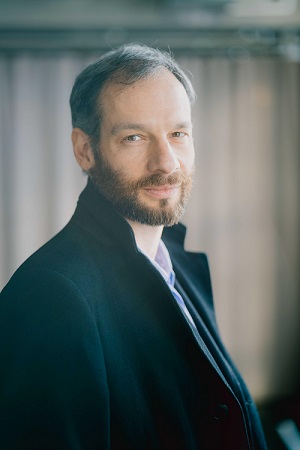 United States Widmann, Beethoven, Sibelius: Sergey Khachatryan (violin), San Francisco Symphony / Dima Slobodeniouk (conductor). Davies Symphony Hall, San Francisco. 24.1.2020. (HS)
United States Widmann, Beethoven, Sibelius: Sergey Khachatryan (violin), San Francisco Symphony / Dima Slobodeniouk (conductor). Davies Symphony Hall, San Francisco. 24.1.2020. (HS)

Jörg Widmann — Con Brio: Concert Overture for Orchestra
Sibelius — Violin Concerto in D minor Op.47
Beethoven — Symphony No.7 in A major Op.92
It took 12 years for Con Brio, Jörg Widmann’s widely performed caprice inspired by Beethoven, to find its way onto a San Francisco Symphony program. And it made the perfect wry entr’acte — in a Beethoven anniversary year — for the orchestra’s first concert filled with the great German composer’s music.
And, no doubt, programs worldwide will also fold in works inspired by the Romantic Era giant. A contemporary example, Con Brio channels some of Beethoven’s sounds and gestures into a spicy concert overture that’s as much Widmann as it is Beethoven. The much-acclaimed contemporary German composer wrote the piece in 2008 on commission from the Bavarian Radio Symphony to open a concert of Beethoven’s Seventh and Eighth symphonies.
Before leading its first San Francisco Symphony performances at this week’s subscription concerts (which concluded with the Seventh), guest conductor Dima Slobodeniouk introduced the piece by referencing how many composers jot down ideas, and then tuck them away in a box as inspiration for future opuses. In this piece, he said, Widmann dumped a box of those ideas on a table, and plucked them out randomly to build the 12-minute overture.
Con Brio starts with a brisk tutti chord, unmistakable as voiced by Beethoven. It might have been the same A-major chord that begins the Seventh Symphony — or maybe not — before the chord cuts off quickly and a skittering figure sets a quick pace in the strings. That sequence is interrupted by another chord, after which the brass section literally breathed through their horns, without making any other sound. Rhythms never quite settle into place, but remnants of actual Beethoven figures — and Widmann’s own Beethoven-esque gestures — pop out of the texture as the piece progresses.
Written for the same orchestral forces as the Seventh, the score brims with humor, down to a sudden and unexpected grand pause. The timpanist kept busy flipping his mallets around to strike a tattoo with the handles on the rims and sides of the drums. If Widmann doesn’t employ the laugh-out-loud humor of Rossini or Prokofiev, Slobodeniouk conducted with welcome transparency and vigor, keeping things lively right up to the piece’s abrupt finish.
When the young Russian-born conductor (who heads both the Orquestra Sinfónica de Galicia in Spain and Lahti Symphony in Finland) got to some real Beethoven, he delivered an account of the Seventh that was equally lively — a good thing for a symphony in which the ‘slow’ movement is marked ‘Allegretto’. Rather than applying any sort of distinctive interpretations, he paid careful attention to nuances in dynamics and phrasing. It all felt natural and organic.
There was a sense of coiled energy in the slow introduction, and instead of bursting into the familiar 6/8 dance, the conductor settled into a comfortable lilt, keeping the pulse moving as the orchestra’s principals deftly tossed the melody around. The Allegretto had more urgency than usual, broadening in tempo only at the movement’s apex. The Presto scherzo bounced along nicely, only for the Allegro con brio finale to take off even faster for an exhilarating conclusion.
If the orchestral textures were thicker and less transparent than Widmann’s, the shapeliness and energy made the journey worthy. Whether or not it was a good idea to separate these two related items with an unrelated concerto, the connections between them emerged clearly.
Sibelius is a particular specialty of Slobodeniouk’s, who also serves as artistic director of the Sibelius Festival. In the composer’s Violin Concerto, the orchestra laid down a solid foundation for the soloist, the young Armenian whiz Sergey Khachatryan.
He managed brilliant articulation of rapid-fire figures, and marvelous moments of delicacy, both in lyrical opening phrases and in the expressive slow movement. But queasy intonation marred his playing on the violin’s lower strings, and he also tended to rush other gestures, throwing off the composer’s narrative arc. That said, the audience responded enthusiastically.
Harvey Steiman